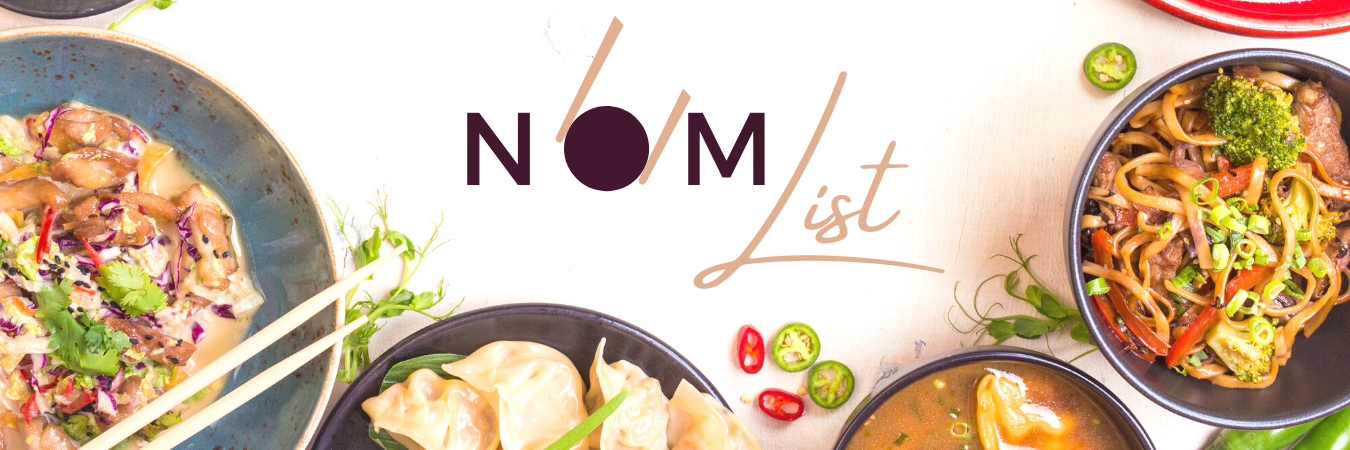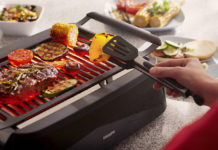
The George Foreman grill has become a popular addition to many kitchens, offering a convenient and healthy way to cook a variety of foods. To make the most out of this versatile appliance, it is essential to understand how to use it properly and to maintain it in good condition for optimal performance.
This article provides helpful tips on using the George Foreman grill by covering various aspects such as proper preparation, cooking techniques, and maintenance procedures. Following these guidelines, users will discover new and exciting ways to cook on this useful kitchen appliance, while ensuring food safety and even cooking results. So, let’s dive into the world of the George Foreman grill and make your cooking experience enjoyable and hassle-free.
Setting up the George Foreman Grill
Before using the George Foreman Grill, it is essential to follow basic safety precautions to prevent electrical shock or other potential hazards. This grill is an electrical appliance designed for household use, so it is crucial to adhere to the manufacturer’s guidelines for operation and safety.
Start by placing the grill on a stable, heat-resistant surface, keeping it away from flammable materials or liquids. Ensure there is enough space around the grill for proper ventilation and heat dissipation. Make sure the cord is not damaged or frayed before plugging it in. If the cord is damaged, do not use the appliance and contact the manufacturer for assistance.
Once the grill is positioned correctly and it has been determined that the cord is in good condition, plug it into an appropriate electrical outlet. Most George Foreman Grills have an indicator light on the top or front panel that signals when the appliance is powered on and heating up. This light typically turns off when the grill reaches its preset cooking temperature.
Before placing any food on the grill, it is important to let it preheat for a few minutes. The time required for preheating may vary depending on the specific model of the George Foreman Grill. It is advisable to consult the user manual for precise information regarding the appropriate preheating time and temperature settings for your grill.
In summary, when setting up the George Foreman Grill, adhere to basic safety precautions and ensure proper placement of the appliance. Also, make sure the cord is in good condition before plugging in, and allow the grill to preheat according to the manufacturer’s recommendations for the optimal cooking experience.
Preheating the Grill
When using a George Foreman grill, preheating is an essential step for achieving the best cooking results. To preheat your indoor electric grill, start by plugging it in and ensuring that the connections are in good condition. Check for any damage on the wire cover, and if necessary, repair it before using the grill 1.
For optimal preheating, turn the grill to a high temperature and wait for at least five minutes 2. This time allows the grill to reach the desired temperature and ensures even cooking. During the preheating process, avoid opening the grill lid as it may release heat and extend the preheating time.
While preheating your George Foreman grill, it’s crucial to manage your expectations. Unlike gas or oven grills, an electric grill might not achieve the same high temperatures. However, it maintains consistent and effective heating levels for various cooking needs.
Proper preheating ensures that your food cooks evenly and retains its natural flavors. Remember to always clean your grill after each use to maintain top performance and prolong its lifespan 3. As you use your George Foreman grill, you can confidently and easily prepare delicious and healthy meals by following these simple preheating guidelines.
Footnotes
- The Indoor Grill – How Long To Preheat George Foreman Grills? ↩
- Mile High Grill and Inn – Getting The Pre-Heat Right: A Guide To Warming Up Your George Foreman Grill ↩
- The Bird BBQ – How to Use George Foreman Grill: Tips and Techniques from a Chef ↩
Selecting and Preparing Ingredients
When using a George Foreman grill, it’s essential to select the right ingredients and prepare them properly. You can cook a wide variety of dishes, including meats, vegetables, and even sandwiches on this versatile grill. This section will provide you with some guidance on choosing and preparing appropriate ingredients for your grill.
To start with, pick fresh and high-quality ingredients for your dishes. For meats such as chicken, steak, and burgers, choose cuts that are tender and have some marbling for maximum flavor. Trim any excess fat from the meat before grilling to avoid flare-ups that could lead to uneven cooking.
Next, consider the vegetables you want to include in your recipes. Asparagus, bell peppers, zucchini, and mushrooms are popular choices on a George Foreman grill. When selecting vegetables, look for firm and brightly-colored produce that is free from blemishes or bruises. Before grilling, wash and chop the vegetables into even sizes to ensure they cook uniformly.
Besides meats and vegetables, you can also grill bread for paninis, sandwiches, and other recipes. Opt for sturdy bread types, such as sourdough or ciabatta, as they hold up well on the grill without becoming too soggy.
To enhance the flavors of your ingredients, season them with herbs, spices, and marinades. Some popular seasonings for meats include garlic, rosemary, thyme, and paprika, while vegetables can benefit from a sprinkle of salt, pepper, and a drizzle of olive oil. Remember to lightly oil your grill before cooking to reduce stickiness and improve taste.
Preparation is key when cooking on a George Foreman grill. To achieve an even cook, make sure your ingredients are uniformly cut and have similar thicknesses. Additionally, it is recommended to bring the meats and vegetables to room temperature for about 20 minutes before grilling.
With these tips in mind, you will be well-equipped to select and prepare ingredients that result in delicious, evenly-cooked meals on your George Foreman grill. Enjoy experimenting with different recipes and creating your unique blend of flavors.
Cooking Time and Temperature
Using a George Foreman grill can significantly reduce the cooking time for various meats due to its design. It cooks from both the top and the bottom simultaneously, making it an efficient and fast cooking appliance. This section will help you determine the appropriate cooking times and temperatures for some popular meats cooked on the George Foreman grill.
A meat thermometer is an essential tool when grilling, as it helps you ensure that your meat reaches a safe internal temperature. For accurate readings, insert the thermometer into the thickest part of the meat without touching the bone or the grill plates.
Chicken: When grilling skinless chicken breasts, set the grill temperature to medium-high at 375°F (190°C). Cook for 9-11 minutes to ensure an internal temperature of 165°F (74°C) is reached. The thickness of the chicken breast should be around ¾-inch source.
Burgers: For a ¼ lb (113g) hamburger patty, set the grill to high temperature, around 400°F (204°C), and cook for 4-5 minutes to reach an internal temperature of 160°F (71°C) source. Turkey burgers, on the other hand, require a slightly lower temperature set at medium-high, or 375°F (190°C), and should cook for 4-6 minutes to reach an internal temperature of 165°F (74°C).
Hot Dogs: Grilling hot dogs on a George Foreman grill is simple and requires only a few minutes for perfectly cooked results. With the grill temperature set at medium-high, cook hot dogs for 3-5 minutes. Keep an eye on them to avoid overcooking.
Pork Chops: Be sure to cook your pork chops on a medium-high heat setting, 375°F (190°C), for 4-6 minutes. The ideal thickness for a pork chop is ¾-inch source, and the internal temperature should reach 145°F (63°C) before serving.
Keep in mind that these cooking times and temperatures may vary depending on the specific model of your George Foreman grill, the thickness of the meat, and individual preferences. Always check the internal temperature using a meat thermometer to ensure food safety. By following these guidelines, you’re sure to enjoy delicious meals cooked on your George Foreman grill.
Using the Grill for Various Dishes
The George Foreman grill is a versatile appliance that can be used for a wide variety of dishes. It comes with several attachments, such as grilling plates, a griddle, and a waffle iron. These accessories make it easy to cook different types of food on the grill. Here are some ideas on how to use the grill for various dishes:
When you want to cook sandwiches, paninis, or quesadillas, the George Foreman grill is an excellent choice. Simply assemble your sandwich and place it on the preheated grill. Close the lid and cook until the bread is toasted and the fillings are heated through. The grill’s nonstick cooking spray can be used to ensure that the bread does not stick to the grilling plates.
For those who love breakfast items, the grill can be transformed into a griddle for cooking eggs, pancakes, and bacon. Preheat the grill, apply some nonstick cooking spray, and cook your breakfast items to perfection. Use the drip tray to catch any excess grease, which helps make your breakfast healthier.
The George Foreman grill is also perfect for cooking a variety of proteins, such as chicken breasts, pork chops, and fish. To ensure even cooking and prevent sticking, make sure to use nonstick cooking spray on the grilling plates. Marinate your protein in your favorite sauce for added flavor before placing it on the grill. Cook until it reaches a safe internal temperature, and enjoy a delicious, healthy meal.
Finally, the waffle iron attachment allows you to make waffles with ease. Simply prepare your waffle batter, preheat the waffle iron, and pour the batter onto the hot surface. Close the lid and cook until the waffles are golden brown and crisp.
The George Foreman grill is a versatile and convenient appliance that allows users to cook a variety of dishes with ease. With the right attachments and a bit of creativity, the possibilities for using the grill are endless.
Marinating and Seasoning Foods
Marinating, which is soaking the food in a sauce before cooking, can enhance the flavor of your dishes when using a George Foreman grill. It tenderizes meat, making it juicy and succulent. A combination of herbs, spices, and acids (such as lemon juice or vinegar) can be used for marinating your favorite cuts of meat.
When marinating, ensure the food is submerged in the marinade for at least 30 minutes, but preferably for a few hours or even overnight to achieve the best results. Make sure to refrigerate the marinating food, and discard any unused marinade that has come into contact with raw meat.
Dry rubs, on the other hand, offer a flavorful alternative to marinating. They are a blend of herbs and spices directly applied to meat before grilling. This technique is perfect for adding depth and dimension to the flavor profiles of your dishes. Rub the seasoning on the meat immediately before placing it on the grill, and avoid using rubs with excessive amounts of salt, as they can cause the meat to dry out during cooking.
A simple seasoning rub for chicken breasts, for example, can be made from oregano, garlic powder, onion powder, paprika, salt, pepper, and olive oil. Mix together the dry ingredients and apply them to the chicken with olive oil, then grill to perfection.
Remember that you can use dry rubs on a George Foreman grill just as you would on an outdoor grill. Consider experimenting with various spices, herbs, and marinade ingredients to find the perfect flavor balance for your grilled dishes.
Maintaining Your Grill
Taking care of your George Foreman grill ensures it will function properly and last for many delicious meals. A significant aspect of grill maintenance is keeping it clean. Many George Foreman grills have removable plates, making it easier to wash them after use. Always follow the instructions in your grill’s user manual about how to clean the plates, whether they can be placed on the dishwasher or should be hand-washed.
In addition to the plates, don’t forget about the drip tray. The removable drip tray catches excess fat and grease, preventing a mess on your kitchen counter. Empty the drip tray after each use to avoid grease build-up and potential fires. Regularly wash the drip tray with warm soapy water and let it dry completely before reassembling.
When cleaning the grill itself, avoid using abrasive materials, which could damage the nonstick surface. Instead, opt for a soft sponge or cloth. For hard-to-reach areas or stubborn residue, a soft brush may be used. Do not immerse the grill base in water, as this could damage the electrical components.
Aside from cleaning, proper storage is crucial for keeping your grill in good condition. Always store your grill in a dry, cool place when not in use. Ensure that the grill cools down completely before storing it away. To save space, you can wrap the grill’s power cord around the base after cleaning and drying the plates and drip tray.
By regularly cleaning the removable plates, emptying and washing the drip tray, and paying attention to proper storage, you’ll be able to maintain your George Foreman grill in great condition for years to come.
Exploring George Foreman Grill Recipes
The George Foreman Grill has gained popularity due to its ability to make cooking healthy and delicious meals simpler. With a variety of recipes specifically designed for this versatile appliance, users can enjoy an array of dishes and experiment with various ingredients.
One popular option is to create chicken quesadillas using the George Foreman Grill. This dish only requires a few ingredients and can be made in just minutes. Feel free to use pre-cooked chicken or follow a recipe for tasty grilled chicken to enhance the flavor.
Another great choice for those looking to diversify their Foreman Grill recipes is pork chops. When prepared on the grill, they come out tender and juicy, maintaining their perfect texture. Simple seasonings like salt and pepper can be enough to achieve delicious results.
The George Foreman Grill is also suitable for cooking chicken breasts. A quick rub of olive oil and dry spices before placing the chicken on a preheated grill ensures the flavors permeate the meat. Cook for 4-6 minutes or until the internal temperature reaches 165°F, then let the chicken rest for a couple of minutes before enjoying the dish.
For those who want to grill seafood, the appliance can also handle grilled shrimp with garlic butter. The evenly distributed heat on the grill plates ensures the shrimp cooks to perfection.
When using a George Foreman Grill for the first time, make sure to follow the proper instructions to avoid common mistakes and get the most out of your appliance. These steps will help ensure safe usage, optimal cooking results, and a positive experience when trying out new recipes.
From chicken and pork to seafood, the George Foreman Grill offers a plethora of recipes and cooking options, making it an invaluable addition to any kitchen.
Safety and Proper Use
When using the George Foreman grill, it is essential to follow safety precautions to ensure a smooth cooking experience. The grill is an electrical appliance that requires careful handling to prevent accidents. Remember, always use the grill in a dry location and follow the manufacturer’s instructions for proper use. This will help prevent electrical shock1.
It is crucial not to use the grill outdoors as it is designed for indoor use only. Avoid using it as a backyard barbecue appliance, as exposing it to liquids or moisture can be hazardous2. The grill must be used and stored out of reach of children, and only be operated by or under the supervision of a responsible adult3.
Although the George Foreman grill is a convenient and healthy alternative to other cooking methods, it is not designed to replace air fryers or deep-fried cooking techniques. Hence, it’s essential to set realistic expectations when using it.
To prevent potential fire hazards, avoid using the grill near flammable materials and ensure proper ventilation in the cooking area. Additionally, clean the grill after every use, as accumulated grease and food particles can pose a fire risk4.
In summary, adhering to the safety guidelines and proper use of the George Foreman grill will ensure a pleasant and hazard-free cooking experience. Cook confidently and enjoy the delicious and healthy results from this versatile appliance.
Footnotes
Alternative Cooking Methods
The George Foreman Grill is an excellent indoor grill, offering versatile cooking options for various food items. Apart from traditional grilling, there are several alternative cooking methods that can be explored using this appliance.
One popular alternative is using the George Foreman Grill as a sandwich press. To do this, simply preheat the grill and place your assembled sandwich onto the non-stick surface. Close the lid firmly, allowing the device to evenly toast the bread while melting the cheese or other ingredients inside. This is a great way to create delicious paninis and grilled cheese sandwiches.
Another method is oven-style baking. The George Foreman Grill can especially come in handy when a conventional oven or gas stove is not available. For example, you can bake small items like cookies and mini pizzas directly on the grill. To achieve this, place a sheet of non-stick baking paper onto the grill, set the temperature to a low setting, and carefully place the food onto the paper. Close the lid and monitor the cooking progress to avoid overcooking.
The versatility of the George Foreman Grill, a product from Spectrum Brands, allows for the appliance to be used for cooking different types of proteins. For instance, you can easily grill delicate fish fillets or even prepare juicy chicken thighs without any hassle. To ensure that the food doesn’t stick, lightly brush the cooking surface with a healthy oil, such as olive oil.
Some additional tips to enhance your George Foreman Grill cooking experience include:
- Preheating the grill to achieve a consistent cooking temperature.
- Monitoring the cooking time to prevent overcooking or burning the food.
- Cleaning the grill plates after every use to maintain optimum performance.
In conclusion, with just a little creativity, the George Foreman Grill can be used for various cooking methods beyond traditional grilling, making it a versatile appliance suitable for every kitchen.
Frequently Asked Questions
How do I cook various types of food on a George Foreman grill?
The George Foreman grill is a versatile kitchen appliance perfect for cooking various types of food like meats, vegetables, and even sandwiches. Start by preheating the grill until the indicator light turns off. Place your desired food items on the grill, and cook them according to the recommended times. For even cooking, it’s important to evenly distribute the food across the grill’s surface. Meats should be cooked until they reach their appropriate internal temperatures. For more tips and techniques, you can visit this guide on using a George Foreman grill.
What is the recommended cooking time for different dishes?
Cooking times can vary depending on the thickness and type of food being prepared. For example, a 1/2-inch thick burger would typically take about 3-5 minutes, while chicken breasts may need 5-7 minutes. It’s best to refer to the user manual or recipes provided by George Foreman for accurate cooking times. Keep in mind that cooking times are only guidelines and it’s important to always check for food’s doneness.
How should I clean the grill after use?
To clean your George Foreman grill, wait for it to cool down to a safe temperature first. Remove any excess grease or food particles using a soft sponge or cloth. The removable cooking plates can usually be washed with warm, soapy water or placed in the dishwasher if they’re dishwasher-safe. For a deep clean, clean the drip tray and any other non-electrical parts that may come in contact with food.
Are there any temperature settings or controls to be aware of?
Some George Foreman grill models have adjustable temperature controls while others have predetermined heat settings. Basic models heat up to a single temperature, usually around 400°F. More advanced models have a range of temperatures to choose from, allowing for more cooking flexibility. Always check the user manual for specific temperature settings and adjustments for each appliance.
Can I use any special accessories or attachments with the grill?
There are various accessories and attachments available for the George Foreman grill, such as waffle plates, griddle plates, and slider plate for mini-burgers. These can be purchased separately and are designed to increase the versatility of your grill. Make sure the accessories are compatible with your specific grill model before purchasing. Check out this George Foreman grill manual for additional information.
Is it safe to use the George Foreman grill indoors?
The George Foreman grill is designed to be safe for indoor use. It uses an electric heating element, which eliminates the need for open flames or charcoal. Ensure proper ventilation in your kitchen, and always place the grill on a heat-resistant, stable surface while in use. Keep away from flammable materials and follow the manufacturer’s safety guidelines.




